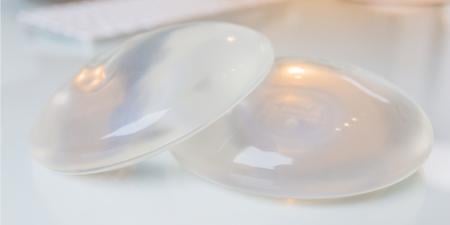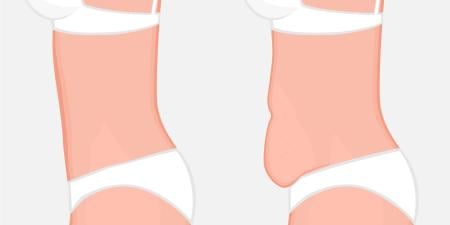The Roots of Plastic Surgery
There is no doubt that sixteenth-century surgeon Gaspare Tagliacozzi would be astonished by the medical innovations that have made facial transplantation possible, and rightfully proud of his early contributions. I doubt, however, that he would be interested in the recent debate about whether the benefit of these experimental surgeries for severe deformities outweighs the psychological impact of an altered face and the increased morbidity and mortality from immunosuppression therapy. He was not deterred from trying to reconstruct deformed noses, lips, and ears by charges that he was subverting the will of God. Nor was he deterred by the lack of pain control or the risk of mortality from shock and infection. Patients’ desire to undergo his elective procedures to look less deformed—at a time when surgery was a dangerous, brutal craft—speaks volumes about the social and psychological value of his reconstructive work [1].
Tagliacozzi would be equally, if not more, astonished by the use of surgery to refashion healthy noses, chins, and cheekbones, enlarge breasts, lift buttocks, remove fat, westernize Asian eyes, flatten ears, and “refresh” aging faces to approximate more closely the prevailing cultural ideals of beauty. In the absence of methods for controlling surgery patients’ pain and infection, it is unlikely that Tagliacozzi could have foreseen the mass market for cosmetic surgery. He made clear in De Curtorum Chirurgia per Insitionem that his purpose was to “restore to wholeness the features which nature gave but chance destroyed, not that they may charm the eye but that they may be an advantage to the living soul….The end for which the physician is working is that the features should fulfill their offices according to nature’s decree” [2]. The modern emergence of surgery for the sole purpose of charming the eye would likely pose an ethical dilemma for Tagliacozzi, who had to be acutely aware of the inherent risks and variable outcomes of any surgical procedure.
The imperative to do no harm has been present in Western medicine since the time of the Hippocratic Oath, along with the dictum to do only what is good for patients. The former is often stated as “first do no harm” to emphasize that, no matter how good their intentions, physicians should not intervene when the risk of harm to a patient is greater or more certain than the chance that they will benefit. This ethical principle stopped most physicians from engaging in surgery for purely cosmetic purposes when demand surfaced after the first public demonstration of anesthesia in 1846 [3]. The few who did worked mainly on those who were stigmatized because their noses resembled those of Jews, impoverished Irish immigrants, or syphilis sufferers. Visible scars marred the aesthetic results, and immunological reactions to implants of ivory, bone, cartilage, and paraffin underscored the enduring wisdom of primum non nocere, even as the risk of infection declined with the gradual adoption of antiseptic techniques [4].
Commercial Plastic Surgery in Twentieth-Century America
American medicine at the turn of the twentieth century was a free market of competing ideologies about disease diagnosis and treatment. Formal training was generally lax and not a prerequisite for practice. Regulatory licensure was largely nonexistent. While many physicians believed that advertising medical services was unethical, others had no qualms about it, including those few “beauty surgeons” who began to specialize in surgery to enhance, rather than merely correct, appearance [5]. Demand was growing.
Many events and advances in medicine contributed to the demand for surgery to change nonstigmatizing features. Innovations in print photography and motion pictures created new standards for judging appearance. The market for beauty products and services accelerated with the advance of industrialization, urbanization, and increased disposable income. The emerging consumer culture placed great value on good looks. The Victorian belief that beauty radiated from internal goodness morphed into the modern, secular idea that every woman could be beautiful if she bought the new products and services offered by the burgeoning beauty industry [6]. As fears about surgical risks declined, cosmetic surgery became one of these services.
Improved outcomes from antisepsis and better control of bleeding, along with publicity surrounding the reconstruction of soldiers’ faces maimed in World War I, won widespread admiration for surgeons’ skills. Early twentieth-century beauty surgeons capitalized on this trust. They offered to remove wrinkles, bags under the eyes, and double chins; create dimples; change lip size; enlarge breasts with paraffin, transplanted fat, and implanted ivory and glass balls; pin back ears; and modify the shape of noses. To “educate” the public about their services, they wrote books and articles and advertised in newspapers, women’s magazines, and brochures. The most entrepreneurial publicized their work on celebrity patients such as vaudeville star Fanny Brice and showgirl Peaches Browning. J. Howard Crum lectured at department stores and staged theatrical performances at New York conventions [7]. In 1932,he transformed the face of a released convict, claiming it would aid her in becoming a law-abiding citizen. Another year he had the patient select a face to suit her personality and operated as a pianist played beauty-themed music. Some results were good. Others were not. The use of paraffin to build up noses and breasts and to fill in wrinkles created a subsequent epidemic of so-called wax cancers and increased the risk of pulmonary embolisms and other health problems. One young woman’s legs had to be amputated after attempts to straighten them led to gangrene. Maimed patients’ only recourse was a lawsuit, and there were many [7]. The days of the publicity-seeking beauty surgeons were coming to a close.
Meanwhile, American medicine was in the midst of major social transformation. The American Medical Association’s 50-year effort to improve the status of the profession with uniform standards for education and ethical practice had finally gained traction. The AMA used its new power to press for regulatory state licensure and impose a ban on advertising. With the help of the muckraking journalists of the era, it vigorously campaigned against competitors, including the beauty surgeons, whom it branded as unethical, irregular quacks. Doctors the AMA deemed ethical, on the other hand, believed advertising was inappropriate.
The eventual demise of the overtly commercial beauty surgeons by 1940 did not stop cosmetic surgery. While the emerging specialty of plastic surgeons deliberately distanced itself from commercial beauty surgeons, excluding cosmetic procedures from residency training and its research journal, some members quietly continued to accommodate the growing demand. By the 1960s, some frustrated young plastic surgeons, secure in the legitimacy of their specialty, organized their own formal training symposia and joined the American Society of Aesthetic Plastic Surgery when it formed in 1967. Shortly thereafter, otolaryngologists established a facial plastic surgery group. Cosmetic surgery was once again out in the open.
Cosmetic surgery was re-commercialized in 1982. Before then, physicians, like other members of learned professions, were exempt from the 1890 Sherman Antitrust Act. The AMA could enforce bans on advertising because the fiduciary services physicians offered were not considered a commercial trade. Opinion changed in the deregulatory climate of the Reagan years. Hoping to bring down health care costs, the Federal Trade Commission sued the AMA for restraint of trade over their prohibition of advertising. Over the strenuous objections of the AMA and the plastic surgery specialty associations, a split Supreme Court decision let a lower court ruling in favor of the Federal Trade Commission stand [8, 9]. Advertising in medicine returned, with its ethical dilemmas, and cosmetic surgery was once again on the cutting edge.
The purpose of advertising is to persuade people to do something. The most effective ads appeal to emotions—fears and desires—and associate the subject of the advertisement with highly valued attributes. It is not difficult to persuade people to do something that will give them a more youthful, sexually attractive appearance in a culture that bestows real social and economic rewards on those who possess these traits. The lure of such rewards can make us gullible and impulsive when it comes to buying the promise of beauty. In 2008, Americans spent more than $8 billion on products chasing that promise [10]. They spent an additional $10.5 billion on nearly 10 million cosmetic medical procedures in 2009, including 1.47 million that were surgical in nature [11].
There is nothing inherently unethical about cosmetic medical procedures. History suggests, however, that commercial medicine is riddled with ethical problems. While the ethical principle of autonomy affirms the right of competent individuals to choose elective health care, even if its only purpose is, as Tagliacozzi poetically put it, to charm the eye, a profound ethical problem arises when the decision is influenced by persuasion from the same physician entrusted by a patient to evaluate the chance of doing good against the possibility of doing harm.
References
-
Brown J. The history of plastic surgery: from ancient India to modern America. Bull Am Coll Surg. 1986;71:21-24.
-
Tagliacozzi G. De Curtorum Chirurgia per Insitionem. 1597. Quoted by: Brown J. The history of plastic surgery: from ancient India to modern America. Bull Am Coll Surg. 1986;71:21-24.
-
Fenster JM. Ether Day: The Strange Tale of America’s Greatest Medical Discovery and the Haunted Men Who Made It. New York: HarperCollins Publishers; 2002: 5.
- Rogers BO. The development of aesthetic plastic surgery: a history. Aesthetic Plast Surg. 1976;1(1):3-24.
-
Starr P. The Social Transformation of American Medicine. New York: Basic Books; 1982:30-144.
-
Banner LW. American Beauty. Chicago: University of Chicago Press; 1983.
-
Haiken E. Venus Envy: A History of Cosmetic Surgery. Baltimore: The Johns Hopkins University Press; 1997: 55-90.
- Avellone JC, Moore FD. Sounding boards. The Federal Trade Commission enters a new arena: health services. N Engl J Med. 1978;299(9):478-483.
-
Gorney M. Advertising in plastic surgery: a position paper. In: US Congress House Committee on Small Business Subcommittee on Regulation, Business Opportunities, and Energy. Unqualified doctors performing cosmetic surgery: policies and enforcement activities of the Federal Trade Commission: hearing before the Subcommittee on Regulation, Business Opportunities, and Energy of the Committee on Small Business, House of Representatives, One Hundred First Congress, first session. Washington, DC: US Government Printing Office; 1989: 206-215.
-
Evans MW. Beauty sales down 3 percent in 2008. Women’s Wear Daily. March 24, 2009:3.
-
American Society for Aesthetic Plastic Surgery. Cosmetic surgery national data bank: statistics 2009. http://www.surgery.org/sites/default/files/2009stats.pdf. Accessed March 11, 2010.



